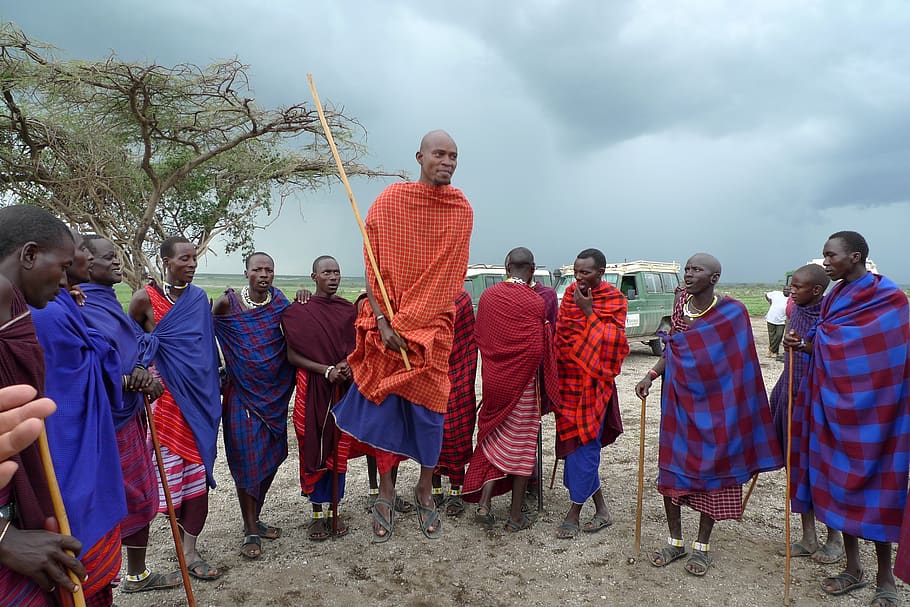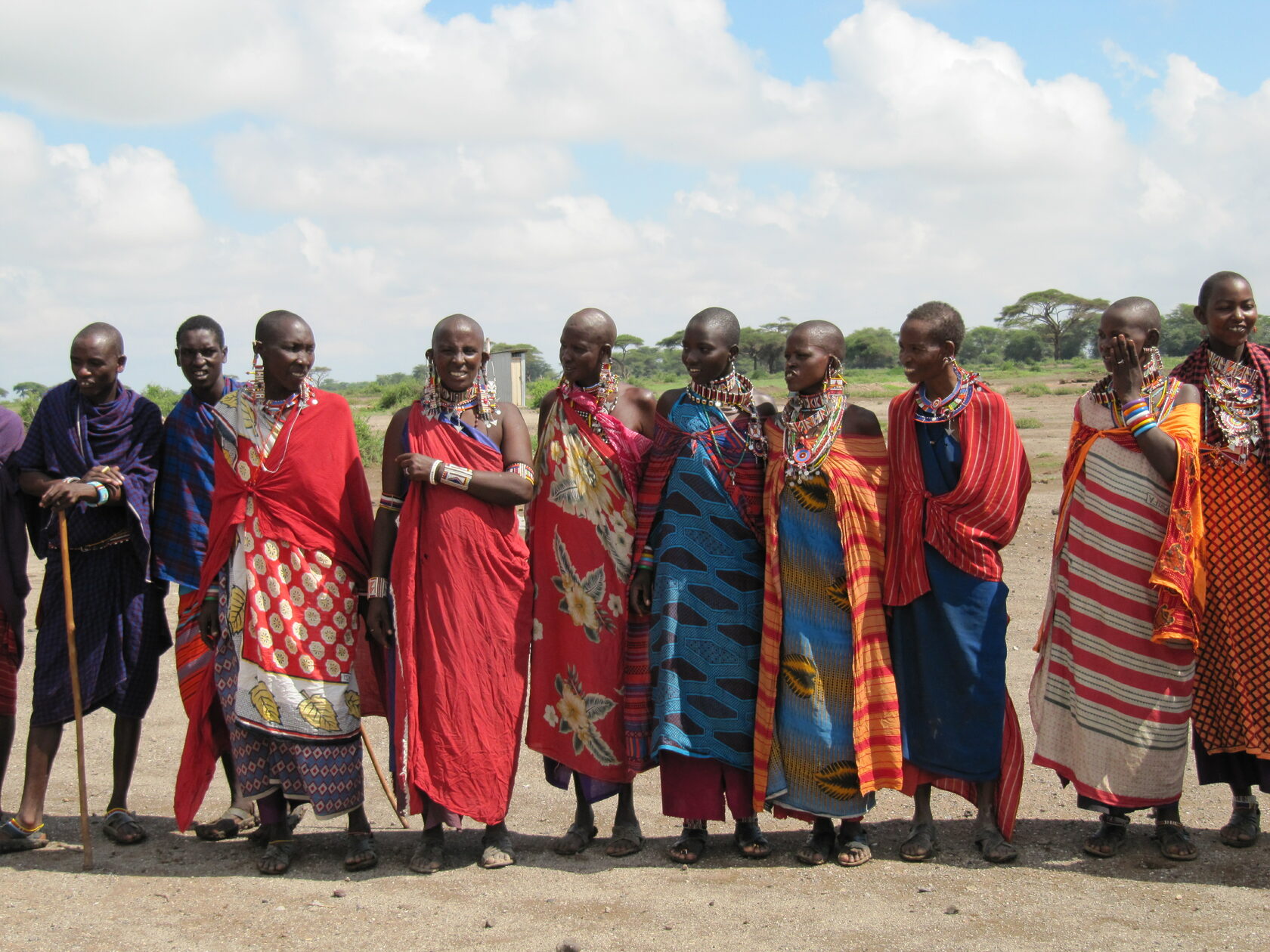The Masai are one of the most colorful and original tribes in Africa. Their culture, traditions and customs have stood the test of time and have been preserved almost in their original form. We tell you what this African tribe can surprise you with.
Where do the Maasai live and what language do they speak?
The Maasai live in Kenya and Tanzania. They always strived for independence and followed their own path of development. Although the African continent remains a mystery to many researchers, the fame of the Maasai tribe has gone far beyond its borders.
When the colonialists began to conquer Africa, many nationalities began to adopt their culture and introduce new customs into their lives. Not the Masai! They completely abandoned the example of life of the European conquerors and to this day have not changed the traditional way of life.
It is very difficult to count the exact number of people in the tribe; the approximate figure is 1.3 million people. The tribe speaks the Maa language, and some Maasai speak English and Swahili. Sometimes the guide becomes the main “language” of travelers and the tribe.
What are they doing?
The Maasai are true nomads, albeit not digital ones. They also came to the territory of Tanzania and Kenya thanks to resettlement. What country do you think? The starting point is difficult to determine, but we assume that it was Sudan. Even today, the Maasai do not stay in one area for long. They are completely dependent on livestock and begin to look for a new place when the cows need new pastures and resources to grow.
The Maasai are warriors in all generations. Their daring nature regularly makes itself felt. The main purpose of their attacks on other tribes is to protect the livestock and defend their ownership. Have you noticed how much attention the Maasai pay to cows? There are reasons for this.
The Maasai believe that their deity created all the cows on earth just for them. Those cows located elsewhere were stolen from the tribe. That is why they still steal entire herds of animals. This rule comes with one caveat: the Maasai do not steal from the Maasai. Unfortunately, 3,000 other African tribes do not have this bonus.
What traditions does the tribe have?
Greeting with a surprise
How do you feel about spitting? We warn you that the Maasai consider this a real privilege, which is not granted to everyone. A member of the tribe will deliberately lose saliva only on special occasions: at celebrations or for a person whom he greatly respects. Saliva is valued almost as highly as water. By the way, it is also considered water. If at the moment of greeting they extended their hand to you, having previously spat on it, congratulations: you have almost become one of them. The same applies to gifts from the tribe.
Warrior initiation ceremony
To become a warrior, it is not enough for a young Masai to simply mature biologically. He must undergo a special procedure in order to receive all the privileges and rights of a full-fledged man.
Little boys have virtually no rights in the community and are required to do all the work that is assigned to them. As children, they become shepherds and make sure that the herds of cows get everything they need. At the same age, girls begin to learn the basics of home life and housekeeping.
At the age of 13-15, boys undergo a very painful and serious circumcision procedure. The Maasai specifically do this at a conscious age in order to test the strength of the future warrior. During the procedure, not a single muscle on the young man’s face should move; he cannot scream or cry. You can only go through this once. If the exam is failed, the boy will never become a man, and his status will be similar to that of a woman.
Circumcision is so painful that many Maasai are carried away unconscious. After several months of wound healing, they wear only black clothes and live separately. After this, they become full-fledged “morani” - warriors. Along with status comes new rights: now a man can breed cows and sell them.
The warrior initiation ceremony is impossible without killing a lion. Today it is more difficult to do this, because the authorities of African states protect lions and take care of preserving their numbers. However, the elders believe that a man must be able to fight a lion in order to protect his family and village in case of danger.

Ritual dance
At the coming of age celebration, all Maasai perform a special ritual dance - adamu. Young warriors move rhythmically to the sonorous chants of their fellow tribesmen. There are several versions of the meaning of this dance.
It is traditionally believed that this is how a young warrior shows his strength and power, reveals himself as a man and attracts the attention of potential brides. The higher a young man jumps, the more girls remember him.
There is another version. Such a dance at the moment of coming of age symbolizes the final farewell to childhood. The young man strives upward and “jumps out” all childishness and frivolity. Now his task is to be a warrior and conqueror.
Beauty concept
The beauty standards for women in the Masai tribe are very specific, but we will cover them. To begin with, girls deliberately knock out their two lower teeth in order to meet the requirements of the tribe. They shave their heads and wear this hairstyle regularly so as not to attract the attention of other men after marriage.
All the girls of the tribe stretch their earlobes and wear metal rings in them. They are pierced with a cow's horn at the age of seven. Not only rings are placed there, but also beaded jewelry with pieces of wood. Over time, the lobes fall lower and lower, reaching the shoulders. The more drawn out the lobes are, the more beautiful the girl is to her fellow tribesmen.

Remember the photographs of the indigenous African population wearing the skins and horns of wild animals? Let us warn you right away: this is not a story about the Maasai tribe. They long ago abandoned traditional attire and switched to shuka. This is a red or blue checkered or striped cloth that is wrapped around the body. The colorful ensemble is complemented with beaded jewelry and beads. This combination looks very impressive.
How do they live and organize their life?
The Maasai destroy stereotypes even in everyday matters. Building a house is a woman's responsibility. Yes, yes, you heard right. All girls should be able not only to manage a household, but also to create it with their own hands. The main building materials for a traditional tribal dwelling are clay, branches and dung. The Maasai use dung for various purposes, including building houses, because cows are the reason for their existence. Houses are usually built in a ring shape and surrounded by a fence to create a barrier against African predators.
The frame of the hut is easy to disassemble and reassemble. This makes it easier for the tribe to move around the area in search of new pastures for livestock. The Maasai live in small settlements, and in the center of the village there is a circle for cows to roost.
A woman marries not one man, but several men of his kind at once. The main role of a girl in a tribe is to give birth to children, raise them, and maintain everyday life. A woman gives birth to as many children as she can, and their number is not limited. Polygyny is common in the tribe, and each new wife builds a house for her husband.

The man is considered the main person in the house; his will is accepted and carried out by everyone unquestioningly. A man's authority is determined by the number of heads in the herd. To be a real boss, you need to have 300-500 cows. Cows are livestock, food and currency all at once. The family gives the son cows before the wedding and pays for the bride with them.
The Maasai eat not only meat, milk, but also animal blood. They believe that blood with milk helps restore strength. This liquid is a constant companion to the circumcision procedure and postpartum recovery.
How can you get to the Maasai village?
Many travel companies offer tours to a traditional Maasai village. There are specialized tours to the tribal village, as well as safaris or complex excursions exploring the life of the traditional population.
You can familiarize yourself with the programs of each offer and choose the appropriate option. We offer the option of a one-day tour and safari.








 ios
ios
 android
android



 BYN
BYN  RUB
RUB 

















